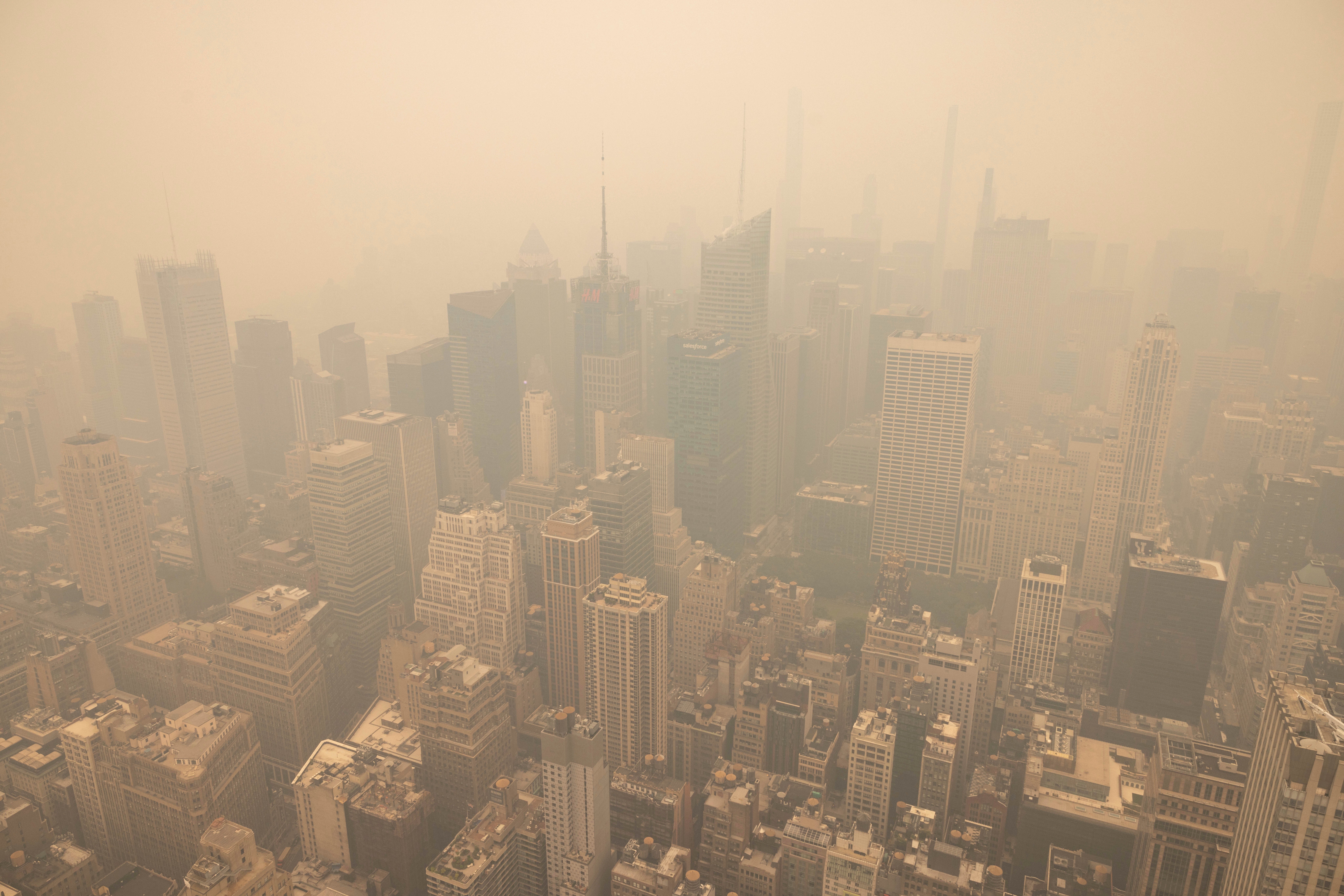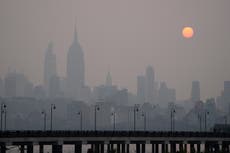When will New York’s air quality improve and where can I check for updates?
Smoke from Canadian wildfires is drifting south and shrouding large parts of the Northeast in noxious smoke
Large parts of the US northeast and Canada have been blanketed in hazardous smoke from more than 400 wildfires burning across Canada.
New York City in particular resembled the fallen world of Blade Runner 2049 on Wednesday with residents posting photos on social media of landmarks like the Statue of Liberty, Brooklyn Bridge and Empire State Building barely visible because of the intense air pollution.
While the phenomenon might look like a surreal novelty, it is an alarming demonstration of the global climate crisis in action and a serious threat to public health.
Flights from New York airports were temporarily grounded on Wednesday and airlines are still experiencing delays on Thursday due to conditions. A number of Broadway shows and sporting events have been called off and schools closed in the city.
At least 13 states have issued air quality alerts, affecting 115 million people including in cities like Baltimore, Detroit, Jersey City, New Haven, Philadelphia and Washington, DC.
On Wednesday, New York governor Kathy Hochul called the darkening skies “unprecedented” and said one million N95 face masks would be handed out to citizens.
“We’re expecting over the next couple of days they’re going to be heading westward. Buffalo and western New York are going to be in trouble tomorrow,” she said.
She added that residents should not spend time outside if they do not need to and expressed her hope that the state would have clear air by the weekend.
That chimes with the opinion of meteorologists like the National Weather Service (NWS)’s Bryan Ramsey who said on Wednesday that the smoke “will probably be hanging around at least for the next few days”.
In the long-term as long as the wildfires remain “large, uncontained, and active, they will likely continue to generate smoke”, NWS said, with its direction dictated “for the next week or two at the very least” by winds and a stalled weather system off the Atlantic coast.
When it comes to public health, Fox Forecast Centre weatherman Brian Mastro said the air quality in New York on Wednesday was “even worse than after the September 11 attacks”.

At one point on Wednesday, New York’s air quality ranked close to 400 on the Air Quality Index (AQI), indicating “very hazardous” conditions.
The AQI, displayed on the federal government’sAirNow site, is the scale used by public officials for air pollution.
The scale runs from 0-500 with “satisfactory” air quality in the 0-50 range.
The AQI provides information on different substances which make up air pollution such as small particulate matter, ground-level ozone and gases like carbon monoxide, sulphur dioxide and nitrogen dioxide.
The wildfire smoke contains dangerous fine particulate matter PM2.5 which causes respiratory system irritation, inflammation and can lead to conditions such as asthma and heart disease.
The National Weather Service’s regional accounts are providing regular updates on where the smoke is travelling alongside the federal air monitor.

Join our commenting forum
Join thought-provoking conversations, follow other Independent readers and see their replies
Comments



Bookmark popover
Removed from bookmarks